Best Copywriting Research Techniques (Voice-of-Customers)
Every copy produced without proper copywriting research is guesswork. No matter how much time you spend on it.
You’ll end up with a fancy coalition of words that will be as fascinating (to you) as ineffective (to your purpose).
Irresistible offers and persuasion techniques aren’t enough to make a copy work. Building a sales connection involves meeting your customers where they are.
To do that, you need deep knowledge about these customers and the market or competition.
With the right copywriting research techniques and strategies, you’ll gain that knowledge without guessing.
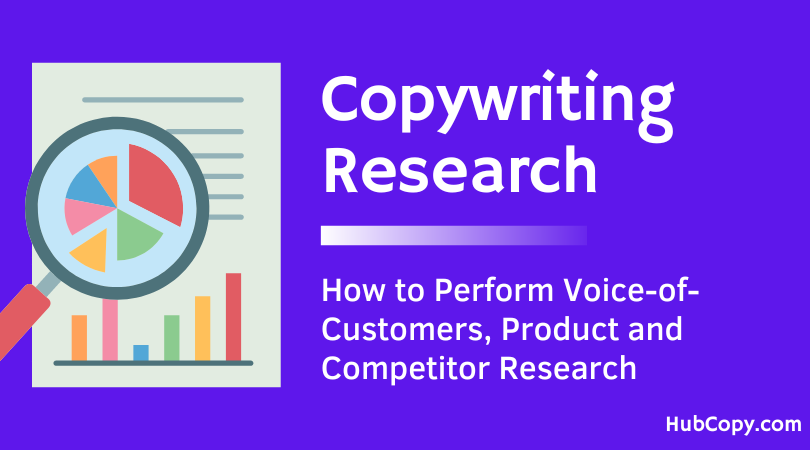
Table of Contents
- Copywriting Research #1: Customer Research
- What is Voice-of-Customers Research in Copywriting?
- 5 Best Copywriting Customer Research Techniques?
- 1. Using Interview for Copywriting Research
- 2. Using Surveys for Copywriting Research
- Copywriting Research #2: Product Research
- Copywriting Research Analysis
- Why Is Product Research Important?
- Copywriting Research #3: Competitors Research
In the previous post – SEO copywriting guide – we mentioned that every copywriting project must pass through 3 stages. The most important of which is the research phase.
Here are the 3 must-do copywriting research you need for your copy to convert.
Copywriting Research #1: Customer Research
Customers have their voice. Finding that voice should be your utmost priority as a business owner.
One of the most expensive copywriting mistakes is to assume that you know.
If you can make your copy speak your audience’s language, you’ll be on a sure-fire path to conversion.
Voice-of-Customer (VoC) research is all you need.
What is Voice-of-Customers Research in Copywriting?
Voice-of-Customer (VoC) research means listening to understand customers’ pains and desires.
It focuses on gathering information from the people you want to sell to and helps align your copy to their exact desires and expectations.
This research provides answers to questions that matter. Unlike the usual guess-and-polish wordsmithing most copywriters do. Questions like;
- What are the customers’ pain points?
- What do they care about?
- What are their motivations?
- How does their interest align with your products or services?
Getting answers to these questions is the only way to write a copy that reaches customers’ hearts.
Let’s look at some of the best VoC research methods for copywriting.
5 Best Copywriting Customer Research Techniques?
- Customers Interview
- Online Surveys
- Social Media
- Customer Support Documentation
- Online Review Mining
1. Using Interview for Copywriting Research

Want to go beyond surface-level demographics in your copywriting research? Conduct one-on-one interviews.
It’s the best way to uncover your audience’s deepest pains and desires.
It helps you understand their thought process. It also helps you unearth the emotional and psychological rationale behind it.
The process is simple. Meet, ask questions, and get answers from the best sources.
Customers’ interview is possible either online or in person.
You can meet your customers by inviting them to your office or their preferred location. You can also hop on a call or chat them up.
Below are some questions your customers will be glad to answer.
Some Interview Questions for Copywriting Research
- Let’s go back to the day you decided to use our service. What influenced your decision?
- Why do you think we are the best fit for you?
- What other products have you considered besides ours?
- What makes you ditch the service you used in the past?
- What is the most appealing thing to you about our products, services, or brand?
- What aspects of our business do you want us to improve?
- Have you-on any occasion, discussed our business with your network?
Tips for Successful Customer Interview
- Seek volunteers from your customer base. Incentivize them if necessary
- Create a chatty environment to get the best out of your interview.
- Ask open-ended questions that encourage them to share their stories.
- Chip in follow-up questions using the insights you grabbed from successive responses.
- If they consent, record the interview session so you can refer to it later.
2. Using Surveys for Copywriting Research

Surveys are another great way to mine information from your audience.
You can run surveys via email or use a platform like SurveyMonkey.
Businesses use surveys to collect specific data points or capture general opinions. You can use it for copywriting research too.
Like interviews, you can tailor survey questions to your specific audience. The only letdown is that you won’t be able to ask follow-up questions.
It’s important to keep your survey concise and easy to complete. This will ensure higher response rates.
3. Using Social Media for Copywriting Research

Social media is a treasure trove of valuable information about your customers.
We now live in an era of social internet. Of the 5.18 billion active internet users, a staggering 4.8 billion are social media users.
That’s 93% of all internet users and 59.9% of the world’s population. (Source, Statista).
No matter your niche or industry, it’s an ongoing conversation on social media.
Copywriting research on social media will not only help you understand market trends. It also helps you find the exact words and phrases potential customers use.
You can join public and private Facebook communities in your niche. Observe conversations, comments, and questions your target audience engages in.
Reddit and Quora are also great places to follow business-related topics and keywords.
Pay attention to the topics potential customers discuss. Also, note the type of solution they seek.
Social listening tools like Hootsuite and Buffer help you identify new social trends and opportunities in your industry.
4. Customer Support Documentation
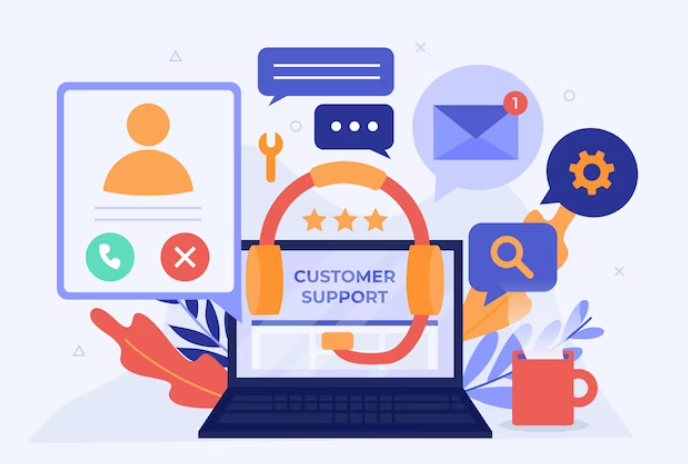
Your customer-facing department’s holds a great deal of information about your business. Its documentation can reveal customer satisfaction and pain points.
If you have one, collaborate with the team to gather this information. Collect customer inquiries, complaints, and feedback.
Look for recurring themes or patterns in the feedback. Identify positive and negative sentiments and craft your content to address them.
FAQs are more reliable if your business already has a robust customer base. If you don’t have FAQs yet, check your competitors’ and handpick what aligns with your business.
5. Online Review Mining

Review mining is an unsung copywriting research technique.
It’s an incredible way to find the voice of your customers if you know how it works.
This research strategy is especially useful when other alternatives are out of reach.
Say you are short on time and resources. Or you can’t roll out surveys due to deadline constraints.
Copywriters also turn to review mining when customer interviews may not be possible.
But what does mining review mean?
Mining reviews means dissecting customers’ testimonials about a product or service. This could be on your website, an e-commerce platform, or a third-party review site.
You can find in-depth examples of VOCs in Yelp and Amazon customers’ review sections.
Don’t have to take my word for that. Here is a running shoe review on Amazon.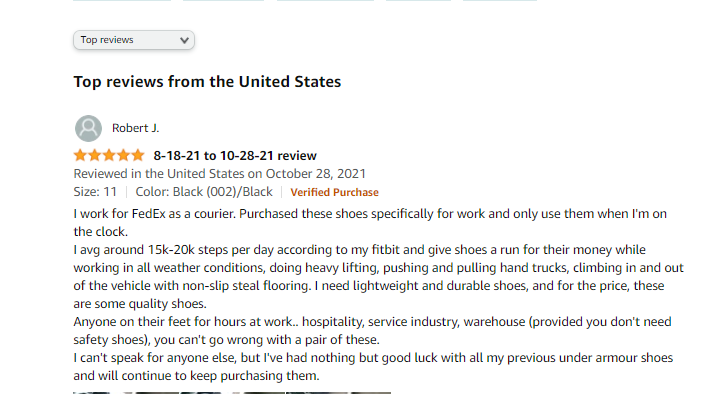
This review answers some of the most important questions you need to ask before writing a copy. Let’s see.
Copywriting Questions & Answers from Review Mining
- Who are the prospective customers for running shoes?
A: Anyone on their feet for hours at work.. hospitality, service industry, warehouse (provided you don’t need safety shoes). I work for FedEx as a courier. Purchased these shoes specifically for work and only use them when I’m on the clock. - What working condition is this product for?
A: Working in all weather conditions, doing heavy lifting, pushing and pulling hand trucks, climbing in and out of the vehicle with non-slip steel flooring - How many steps a day can a running shoe give?
A: 15k-20k steps per day, according to my Fitbit. - What do you enjoy about this product?
A: I need lightweight and durable shoes, - What other things are you happy about?
A: And for the price, these are some quality shoes. You can’t go wrong with a pair of these.
That was a breeze- word-for-word lifting!
If one review could provide so many talking points, what would happen when you dissect 5, 10, 20, or more? Your copy will be irresistible.
Copywriting Research #2: Product Research
A fantastic copy can sell a not-so-good product -at least for a while. But when a bad copy happens to a fantastic product, selling becomes laborious.
Understanding your product increases the confidence and competence consumers smell from your copy.
It’s not about the best, world-leading, number one, or other highfalutin phrases you see everywhere.
It’s about making your customers feel that-
- They are making the best decision there is.
- They are getting more value than they are paying for.
- You care about solving their problems, not their money.
Examples of Copywriting Product Research
Imagine having these two copy heads for running shoes on a sales page;
Headline A:
Get the best running shoes from the world-leading manufacturer for over 100 years.
For your leisure, adventure, and work, Akube is the only companion you need.
Headline B:
A Pair of Shoes. A Lifetime of Activity. Akube Outlives Its Owner.
Walk. Jog. Run. For Your Errands. It’s Tougher.
Bike. Hike. Ski. On Your Adventures. It Conquers.
Mine. Farm. Lift. With Your Exploits. It Sparkles.
Is there any difference?
Headline A is good. It’s what any regular copywriter could produce.
Headlines like B come from an informed knowledge of the products and ideal customers.
More than A, B is everything a copy should be. Every single phrase therein strikes a chord with the audience.
You might want to know how this comes together. Your answer is the Amazon review we discussed above.
Let’s analyze this a bit.
Copywriting Research Analysis
A Pair of Shoes. A Lifetime of Activity. Akube Outlives Its Owner
This copy sells the experience of ruggedness and durability, not running shoes.
It promises to last anyone a lifetime of activities and even more. By implication, customers are getting more value than whatever they are paying.
The sub-headlines address customer-specific interests. It shows that the writer knows his audience, cares about them, and wants to help them achieve their goals.
Instead of saying the shoe is ideal for leisure, heavy lifting, or what a view, it opted for activities the audience engages in.
This resonates better as it makes them imagine Akube on their feet.
For prospects interested in leisure or sport – Walk. Jog, Run. For Your Errands. It’s Tougher
For thrill-seekers – Bike. Hike. Ski. For Your Adventures. It Conquers.
For heavy-lifters- Mine. Farm. Lift. With Your Exploits. It Sparkles.
One more catch here – look at the unusual sentence structure.
Well, I heeded this advice:
Learn the rules like a pro, so you can break them like an artist.
Pablo Picasso
Because I want to
Make it simple. Make it memorable. Make it inviting to look at. Make it fun to read.
Leo Burnett
Why Is Product Research Important?
When a prospect lands on your copy, their subconscious mind raises a lot of objections.
The worst thing that can happen is your copy to give off a fragrance of mediocrity. And YES, prospects can smell confidence.
If your copy is not factually convincing, they’d figure it out fast.
To write with confidence, or let’s say to sell with courage, you must know your product in and out.
David Ogilvy and Joe Sugarman are two exemplary copywriters of the 19th century.
Let’s go over 2 of their legendary work to underline the importance of product research.
- David Ogilvy Rolls-Royce Ad Copy
- Joseph Sugarman Laser Beam Digital Watch Ad Copy
A. David Ogilvy Rolls-Royce Ad Copy
In 1957, David Ogilvy wrote one of the greatest advertisements of all time. It was for Rolls-Royce.
The headline of the ad alone sold the products.
It sent a direct message to a specific audience- Wealthy business people looking for luxury rides.
“At 60 miles an hour, the loudest noise in the new Rolls-Royce comes from the electric clock”
How did David Olgivy arrive here?
In his book, Confessions of an Advertising Man, Ogilvy confirmed that he spent three weeks researching Rolls-Royce.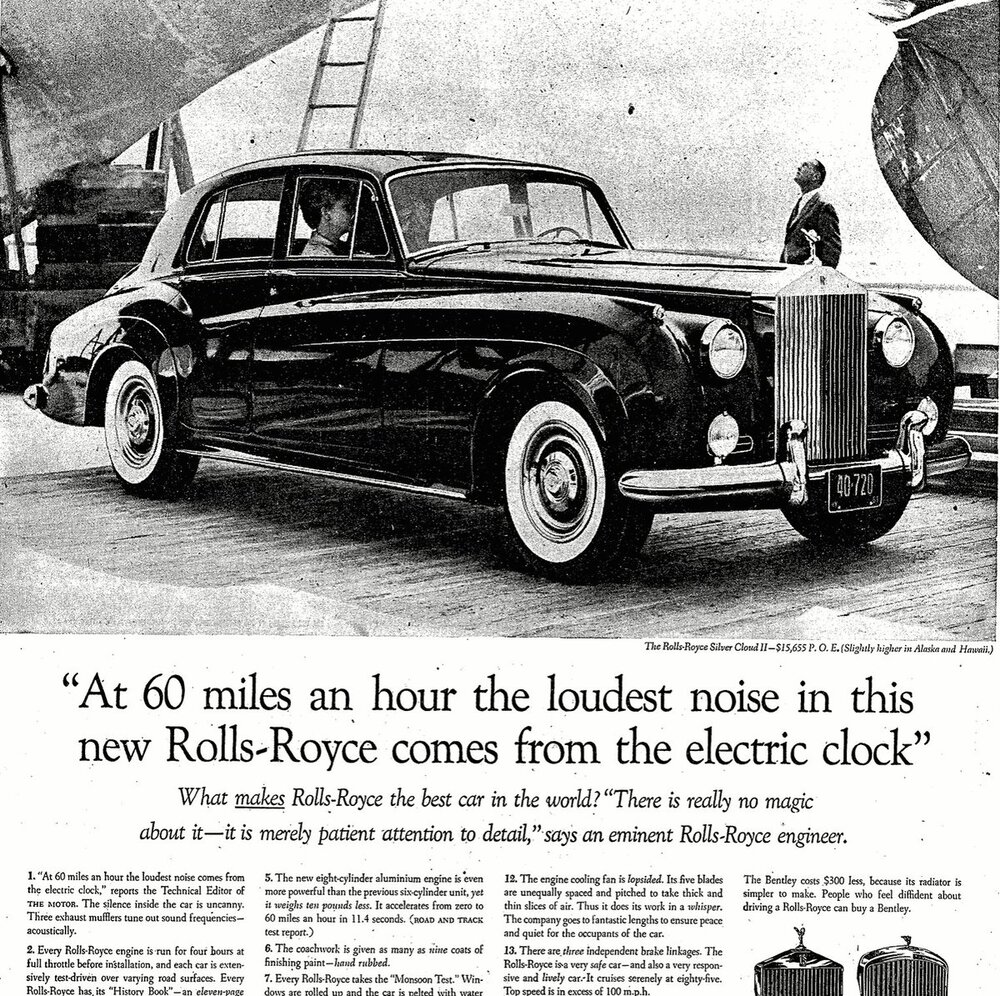
From designers to engineers, Ogivly gathered information from people who know best about the car.
Here’s the kicker;
History has it that the headline was a quote from the Technical Editor’s write-up in “The Motor,” a British motor magazine.
Nonetheless, it’s Ogilvy’s trained eyes that recognized it as a gangbuster selling line.
All in all, Ogilvy’s three weeks of research paid off.
Your Takeaway:
A curious mind and investigative eyes make you a great copywriter. Such that when people see ordinary, you see extraordinary.
HubCopy
B. Joseph Sugarman Digital Watch Ad Copy
Joseph Sugarman is renowned for his intimacy with electronics. Despite this, he spent days in the Sensor Watch company laboratory.
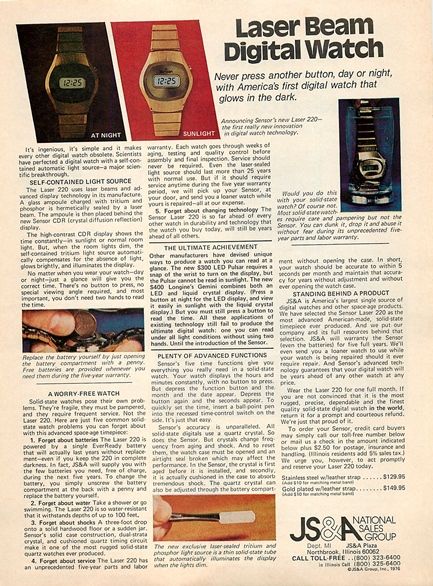
He studied everything about how the new digital watch was designed and assembled.
Joe finally found the concept that sold the watch from his conversations with the engineers.
“That single concept resulted in millions of dollars in profitable sales for the digital watch.” He said in his book, The Adweek Copywriting Handbook.
“But it took a few days of very intensive learning and study before the concept emerged. Sometimes this can happen in a few minutes, sometimes it can happen in a few hours, and sometimes it may take weeks” -Joseph Sugarman
Copywriting Research #3: Competitors Research
No one joins a competition without a clear picture of what’s at stake. The same applies to copywriting.
Even if you have a hard-to-beat product, you must know what and who you are up against.
Knowing your market and competitors will not only help you market your product. It could also help you find a unique leverage over competitors.
New copywriters check out competitors for inspiration. Pros do the same when looking for loopholes and what to do better.
Don’t gather your competitors’ copy and rephrase. Instead, find out what sets you apart from the competition. In other words, find a Unique Selling Point.
- Why is your brand, product, or service distinct?
- Why should people come for your product? Why not other people’s products?
- How does your product differ from products XYZ?
- What are the strengths and weaknesses of your competitors?
- What weakness can you capitalize on?
- What new thing are you bringing to the market?
Look into the collection of alternatives your prospects might consider. Dig into their similarities and differences.
Analyze what edge product A has over B, B over C, C over D, and so forth like that.
As you do, you will find what makes your product unique. Provided you understand your audience and your products in the first place.
You can learn more about creating a unique selling proposition here.
Congratulations! This ends the prewriting stage of copywriting. It’s time to put pen to paper.
Go to Next: 14 snazzy conversions copywriting strategies with examples
Read Previous: SEO copywriting guide


